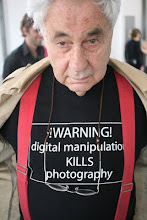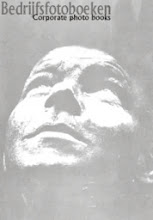 Wally Elenbaas received no formal training as a photographer, and was only incidentally involved with photography. On leaving school he studied bookkeeping, and from 1928 he worked in the office of a German grain merchant for four years. His wages and leisure hours were spent almost entirely on literature ranging from Karl Marx to Kurt Tucholsky and André Gide. When he lost his job, he joined the Young Communists. This brought him into contact with the artistic and intellectual circle around Paul Schuitema and the workers-writers collective Links Richten. Here he discovered that photography could be used as a weapon in the class struggle, and decided to join the Vereeniging van Arbeiders-Fotografen (association of workers-photographers).
Wally Elenbaas received no formal training as a photographer, and was only incidentally involved with photography. On leaving school he studied bookkeeping, and from 1928 he worked in the office of a German grain merchant for four years. His wages and leisure hours were spent almost entirely on literature ranging from Karl Marx to Kurt Tucholsky and André Gide. When he lost his job, he joined the Young Communists. This brought him into contact with the artistic and intellectual circle around Paul Schuitema and the workers-writers collective Links Richten. Here he discovered that photography could be used as a weapon in the class struggle, and decided to join the Vereeniging van Arbeiders-Fotografen (association of workers-photographers).
During preparations for the exhibition and publication Fotografie in Nederland 1920-1940, held in The Hague in 1979, only fifteen exhibition prints and one roll of film were found. The exceptional quality of these photos was however immediately apparent.
After World War Two Elenbaas was best known as a printmaker and artist. His surviving negatives of the thirties show how powerfully New Photography influenced social photography. That influence is evident not only in street situations typical of photographs of workers, but also in pictures of a wet road surface and a toppled lamp-post after a demonstration.
In 1937 Elenbaas was represented at Foto '37, one of the most important prewar photography exhibitions. It was during that period, however, that Elenbaas took up painting. Not until after the war did he pick up his camera again, photographing not only still-lifes and portraits characterised by a strongly surrealist atmosphere but also Katendrecht, the Rotterdam harbor district which has been his home for so long. These pictures are closely linked with Elenbaas' personal life, but transcend it in their exceptional artistic quality.



















Geen opmerkingen:
Een reactie posten